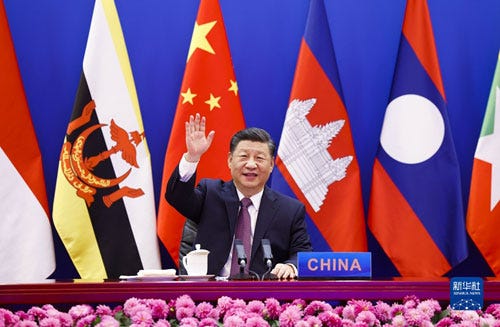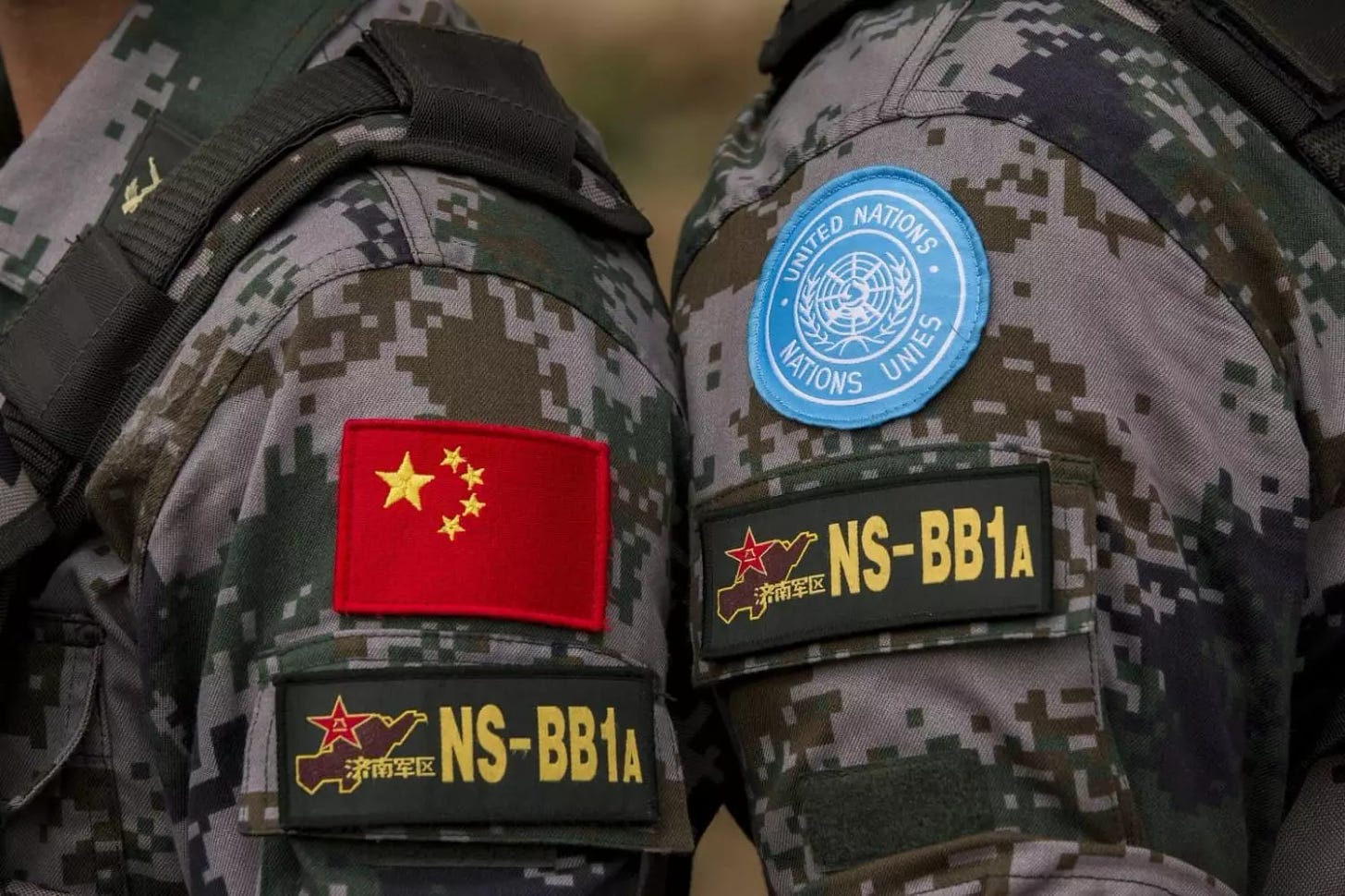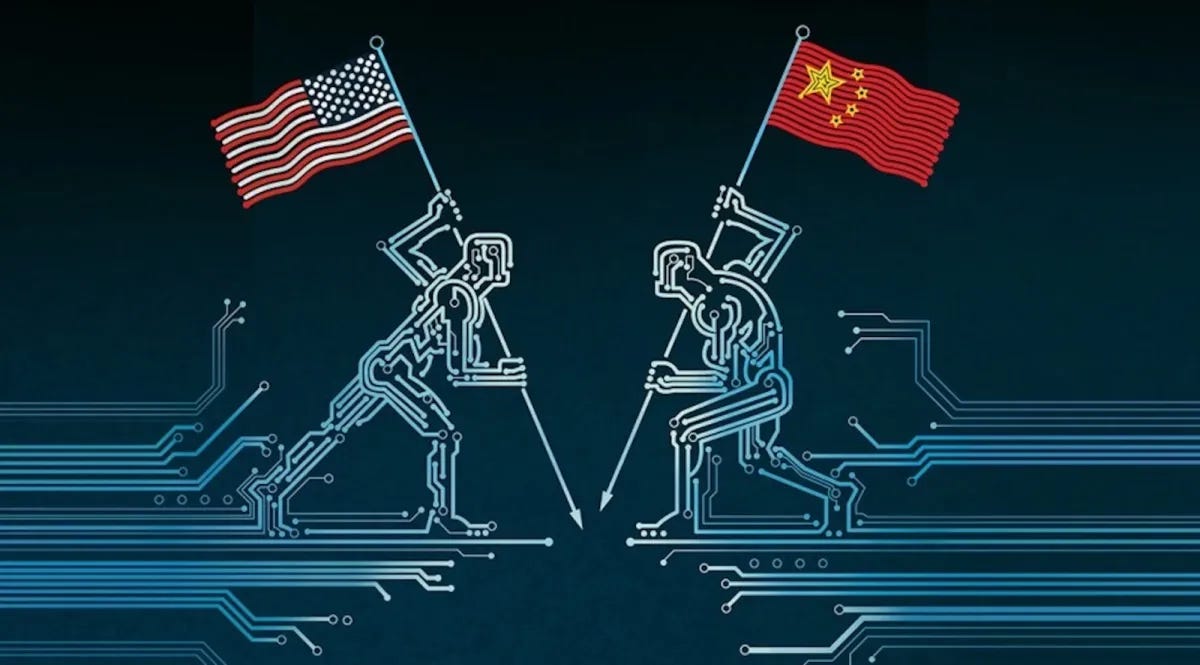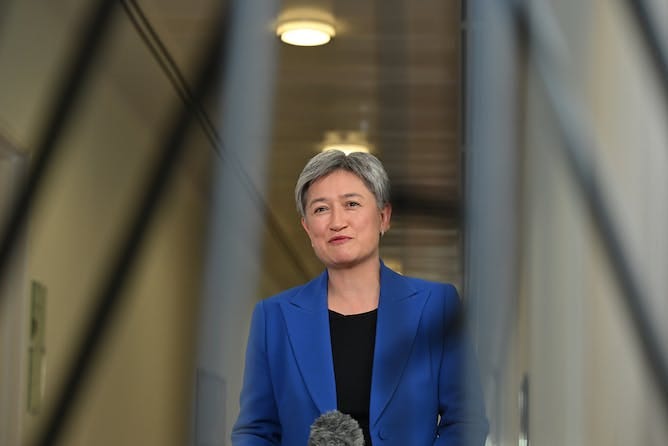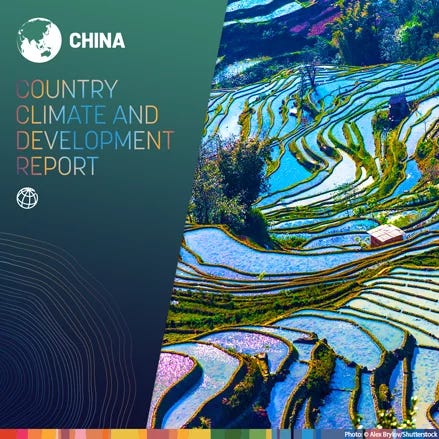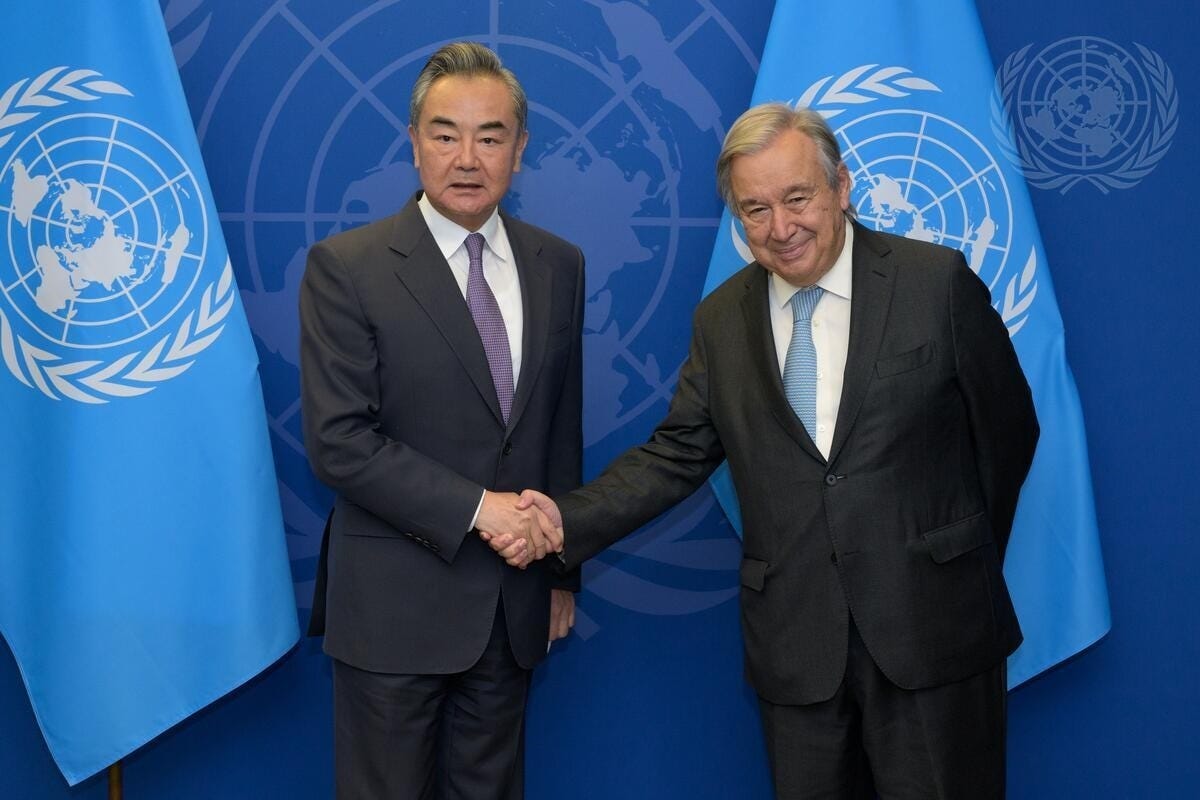China China China
China ASEAN dynamic, China importance at UN, US tech war, China's middle class on holiday, Australia seeks China thaw, China Climate Country report, Harris sells IPEF, Wang Yi won't buy it..
UPDATE: The Long Mekong Daily sets its sights on China today. In Cambodia China-ASEAN dynamism is on display for everyone to see as the country makes a “double opening” -internally between provinces and externally to its neighbours Vietnam, Thailand and Laos and benefits from the RCEP and the Cambodia-China FTA. Australia’s Lowy Institute gives Foreign Minister Penny Wong’s Beijing visit a push with a polished piece on China’s importance to the UN. The ongoing US tech-war on China is bad for everyone including the US and the Long Mekong Daily runs two stories on the Indo-Pacific Economic Framework (IPEF) that tells the story of a trade arrangement that is not a FTA, but a regulatory rights arrangement to sell services and wave the flag, but offers no access to the US market. All in all China comes out looking good, but the World Bank is still cautious. Read on!
Dynamics of China - ASEAN cooperation
The China-ASEAN relationship has grown into the most successful and vibrant model for cooperation in the Asia-Pacific, and the two sides have made an exemplary effort in building a community with a shared future for mankind.
Cooperation between China and the Association of Southeast Asian Nations (ASEAN) is the most dynamic in the region, covering in all spheres, a Cambodian government official and experts said.
Kao Kim Hourn, a minister attached to the prime minister of Cambodia, said close China-ASEAN ties are essential to ensuring long-lasting peace, security, stability, sustainable and common development, and prosperity in the region.
"Between ASEAN and China, we have cooperation in all sectors," he told Xinhua in a recent interview. "China is one of the (ASEAN) dialogue partners that we have the most comprehensive level of cooperation."
China and ASEAN elevated their relations to the Comprehensive Strategic Partnership in 2021.
Kim Hourn, who will take over the post of ASEAN Secretary General from January 2023, said China and ASEAN relations have been deepened in all areas, especially in politics, security, economy, trade, society and culture.
He added that both sides have enjoyed a steady rise in trade and investment under the free trade mechanisms such as the China-ASEAN Free Trade Area and the Regional Comprehensive Economic Partnership (RCEP).
Kin Phea, director general of the International Relations Institute of Cambodia, a think tank under the Royal Academy of Cambodia, said amidst global uncertainties, pandemic, rising global inflation and climate change, closer China-ASEAN relations are even more important to ensuring regional peace, stability and food security.
"China and ASEAN are the guardians of peace and stability in the Asia-Pacific," he told Xinhua.
"Closer China-ASEAN cooperation will contribute greater to increasing mutual understanding and trust, and promoting peace and stability in the region, which are the common aspirations of all people."
Read full article here.
China’s growing importance to the United Nations.
Beijing aims to exert influence at the world body to legitimise and disseminate its foreign policy values and interests. A new report from the Low Institute in Australia tries to contextualise China’s growing presence at the United Nations by examining publicly available data on four metrics that gauge Beijing’s success in steering the global governance agenda. Those metrics are: funding for UN departments, programs, and initiatives; staffing of executive-level personnel positions; voting in the UN General Assembly and UN Security Council; and the use of PRC-specific discourse and language in UN-generated documentation.
The United Nations has become progressively more reliant on China’s general contributions, and in turn China has used a combination of levers to elevate its position within the UN system. However, this report finds that China is still selective in its overall approach to UN participation and that efforts by the PRC do not necessarily translate into successful influence at the body.
The report makes three recommendations for UN stakeholders. First, a deeper understanding must be gained of what China contributes across different UN agencies and functional areas to establish a more complete picture of its multilateral input. Second, efforts should be made to shape China’s engagement in multilateral issues, in particular those that the PRC is yet to prioritise, such as refugee management. Third, it is vital to articulate an inclusive multilateral vision for a rules-based international order that specifies under which conditions China’s contributions are embraced, rather than framing PRC input solely as a source of concern.
Download the full report here.
The Art of Tech War
A monumental shift in United States policy vis-à-vis China took place on October 7. On that day, the US Commerce department released a 139 page document listing measures that effectively restrict China’s access to the most advanced semiconductors. These measures are likely to set back China’s ambitions in many areas of technological development. Semiconductors and their information processing power are the basis of technologies ranging from AI to supercomputing to medical and biological innovations—all priorities in China’s 14th Five Year Plan. Advanced semiconductors are also key building blocks for today’s most sophisticated weapons, and that is what led the US to impose the measures.
The new rules not only apply to US firms, but to any company worldwide that uses US semiconductor technology, which practically means all the world’s leading chipmakers makers have to follow the new sanctions regime. Chad Bown’s recent Trade Talk podcast provides a very accessible explanation of where the measures came from and what they mean for China and the rest of the world. In putting up a licencing regime for chip making tools from US companies such as Applied Materials, Lam Research, and KLA, the US department of commerce effectively cuts of China from the supply of the most advanced chips, the tools to make them with and US expert to use the tools.
This is a big step. As CSIS, a US think tank wrote: “In weaponizing its dominant chokepoint positions in the global semiconductor value chain, the United States is exercising technological and geopolitical power on an incredible scale.” An American observer of China’s chips industry remarked: “This is what annihilation looks like: China’s semiconductor manufacturing industry was reduced to zero overnight. Complete collapse. No chance of survival.”
At a recent conference of the Peterson Institute of International Economics and the Lee Kuan Yew School, Singapore’s Foreign Minister Vivian Balakrishnan called this “All but a declaration of technological war.”
Read the full newsletter here.
How pandemic changes lifestyles, travel habits of China's middle class
Local outdoor activities were seized by travel agencies as a "life-saving" straw in the pandemic, a move that may change the future of tourism even after COVID-19 walks away.
Over the last three years, the pandemic has changed some Chinese consumer habits, particularly in the tourism industry, which has been hit hard by COVID. As China optimized its COVID response, seizing the opportunities presented by the new consumer demands and the new consumption scenes appears to be essential for both new players and established ones who have recently survived the storm.
Camping, cycling, surf skating ... This year has seen the rise of outdoor activities. While the pandemic restricted long-distance trips to some extent, excursions to suburbs are booming due to the restrictions.
The increase in outdoor lifestyles has also boosted outdoor sports brands and outdoor outfits. In the past month, users posted 118,000 notes about outdoor activities on Xiaohongshu, a social media platform in China.
Read the full newsletter here.
Australian Foreign Minister Penny Wong to visit Beijing as ‘strategic dialogue’ restarts in new breakthrough in Australia-China relations
Australia’s relations with China will take another major step forward this week with Foreign Minister Penny Wong travelling to Beijing for the resumption of the bilateral Foreign and Strategic Dialogue, which has been on hold since 2018.
The latest breakthrough follows the meeting between Prime Minister Anthony Albanese and President Xi Jinping on the sidelines of the G20 summit. Wong’s Wednesday talks coincide with the 50th anniversary of the Whitlam government establishing diplomatic relations with China on December 21 1972 – an anniversary the Chinese government had been indicating it wanted to mark. They are also part of a round of meetings with foreign ministers that China is conducting.
Australian exporters will hope the meeting paves the way to China easing the trade restrictions it has imposed on Australia. The improved relations may also be positive for detained Australians Cheng Lei and Yang Hengjun.
In a statement Albanese and Wong said: “In 1972, then Prime Minister Gough Whitlam took a bold decision, recognising the importance of engagement and cooperation between our two nations and peoples.
"In the decades since, China has grown to become one of the world’s largest economies and Australia’s largest trading partner.
They said Wong was going to Beijing at the Chinese government’s invitation “to meet China’s State Councilor and Minister of Foreign Affairs, Wang Yi, and hold the 6th Australia–China Foreign and Strategic Dialogue”.
Albanese and Wong said they welcomed the opportunity to mark the 50th anniversary of diplomatic relations.
Read the full article here.
World Bank China Country Climate Development Report
The China Country Climate and Development Report (CCDR) provides analysis and recommendations on integrating the country’s efforts to achieve high-quality development with the pursuit of emission reduction and climate resilience. Without adequate mitigation and adaptation efforts, climate risks will become a growing constraint to China’s long-term growth and prosperity, threatening to reverse development gains.
Conversely, if efforts to tackle climate risks lead to a significant decline in growth and rising inequality, they would deprive millions of people of development and likely erode support for the reforms necessary to achieve a lasting economic transformation. Hence, China will need to grow and green its economy at the same time. This report offers policy options to achieve these dual objectives by easing inevitable trade-offs and maximising potential synergies between China’s development and climate objectives.
China’s climate ambition and development opportunity
China’s development and climate change are deeply and increasingly intertwined. The country is both a contributor to rising global greenhouse gas (GHG) emissions and is severely affected by its adverse impacts. Alongside other larger emitters, China’s contribution to reducing global climate risks is therefore crucial. Reducing greenhouse gas emissions in its relatively carbon-intensive industrial economy will not be easy, posing transition risks but also opening new opportunities for development. The CCDR is firmly anchored in China’s own development and climate aspirations.
Read the full report here.
VP Harris Assures Asian Leaders US Is ‘Here to Stay’
Asian countries have long worried about U.S. economic commitment to the region. U.S. Vice President Kamala Harris assured Asian leaders Friday that “the United States is here to stay” as she pitched Washington as a reliable economic partner committed to the region and its prosperity.
Harris told leaders at the Asia Pacific Economic Cooperation (APEC) summit that the U.S. is a “proud Pacific power” and has a “vital interest in promoting a region that is open, interconnected, prosperous, secure and resilient.”
“The United States has an enduring economic commitment to the Indo-Pacific, one that is measured not in years, but in decades, and generations,” she said. “And there is no better economic partner for this region than the United States of America.”
Harris postponed the start of her speech after receiving news that North Korea had fired an intercontinental ballistic missile that landed near Japanese waters. She joined an emergency meeting of the leaders of Japan, South Korea, Australia, New Zealand, and Canada in which she slammed the missile test as a “brazen violation of multiple U.N. Security resolutions.”
Read the full article here.
“IPEF unlikely to succeed, for it serves US’ own interests”
(Wang Yi, Sep 2022)
Ministers from 14 member countries of the US-led Indo-Pacific Economic Framework for Prosperity, known as the IPEF, had their first in-person gathering in Los Angeles, marking the start of the so-called rules-making negotiations for the framework, which was launched in May and is widely seen as a Washington-created geopolitical tool to contain China.
The meeting may touch on negotiations on issues like trade, supply chain and clean energy, and may lay out the first contours of an agreement, but many observers are not optimistic about the prospect of the talks, as the US is expected to have irreconcilable major differences with regional economies on issues like market access, tariff reduction, and trade liberalization. For similar reasons, former US President Donald Trump opted to withdraw from the Trans-Pacific Partnership Agreement(TPP) in 2017.
It is reported that IPEF is not a conventional trade agreement like TPP and it will mainly focus on the digital economy, semiconductors and other strategic materials, and promotes "high standards," but no matter how dazzling US rhetoric may be, it is almost certain that the US is not willing to make substantive concessions on any economic and trade issues of concern to other IPEF economies. The US always put its own interests first.
US government officials have claimed that there are four policy pillars for IPEF - fair trade, supply chain resilience, infrastructure and clean energy. However, despite countless infrastructure plans conceived by the US, most of its promises have turned out to be only window dressing and don't involve any real investment. Similarly, the lack of support behind the opening of the US market behind IPEF is a fact that cannot be changed no matter how many ministerial meetings are to be held or how loud US officials tout their latest deal.
Rational people in many Asia-Pacific regional economies are increasingly aware of these facts, with some warning that it is best not to be too optimistic about the IPEF. Regional economies and the US may have considerable disagreements over many issues. The framework only touts the so-called "high standards," which poses challenges rather than providing benefits to regional economies.
For the US, from the TPP to the IPEF, what remains unchanged is that the Washington' purpose is by no means to promote economic and trade cooperation, and boost regional prosperity. Washington aspires to make use of the arrangements as tools to serve the US' own geopolitical agenda.
The US is attempting to use IPEF to woo other regional economies to "decouple" from China's economy and create a "small circle" that excludes China from regional supply chains.
Read the full article here.




